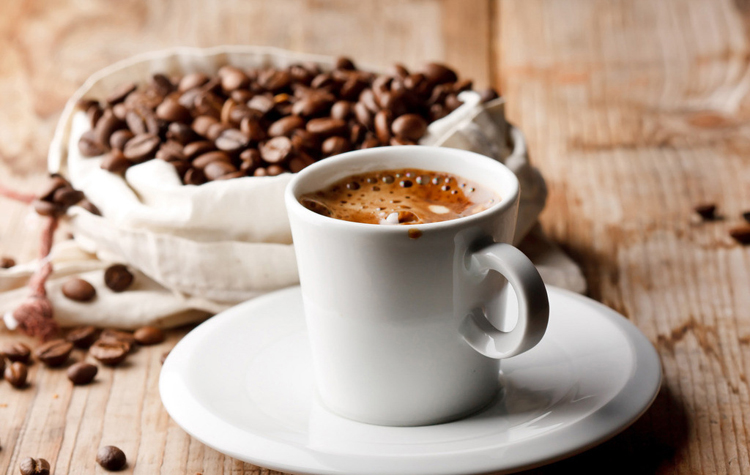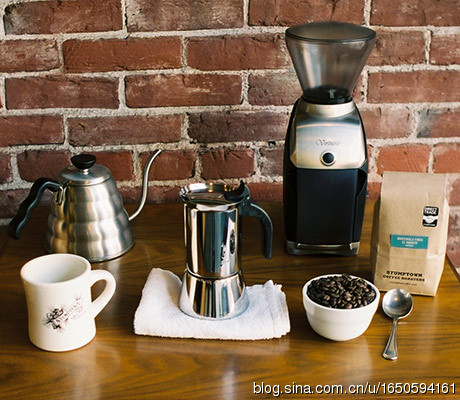The key to steaming coffee extraction time of Italian coffee and steaming time of hand-brewed coffee
Steaming, which is often expressed as Bloom in English instructions, refers to the preparatory action of wetting a small amount of hot water evenly on the surface of coffee powder during hand flushing before formal water injection.
There are two purposes of steaming:
First, in order to release the gas in the coffee particles, mainly carbon dioxide. Generally speaking, the closer it is to the baking time, the more bubbles usually occur during prepreg. On the other hand, the coffee beans with deeper roasting degree will release more gas in the steaming process than the coffee beans with lower roasting degree because of less water content.
Second, if the coffee particles after exhaust gas can be evenly absorbed and saturated, the subsequent extraction can be uniform. In short, during steaming, the air between the coffee powder particles expands and releases a large amount of carbon dioxide, while a short gap layer between the coffee powder particles will provide the space needed for hot water to pass through the powder layer during formal water injection.
If the initial step of hand flushing is less steaming, a large amount of hot water will follow a local and a small number of waterways through the powder layer, so that the dripping time will be longer, which may lead to excessive extraction, because the extraction time is longer and more substances are dissolved. the taste may be more sour and irritating, or full of miscellaneous taste. However, once you can pay attention to the action of steaming and then start formal water injection, the hot water can pass through the filter layer evenly composed of coffee powder, and then achieve the purpose of uniform extraction.
The following points will be conducive to the smooth achievement of steaming:
Before steaming with water, make sure the coffee powder is as horizontal as possible in the filter screen or filter paper.
When steaming, the force of injecting water is not too strong, gently.
The amount of water used in steaming should be 10% of the total water. For 240 milliliters of coffee, the amount of water needed for steaming is about 24 milliliters.
In the process of steaming, there is as little extract as possible; when there is too much extract in the kettle, the amount of water injected should be reduced, or attention should be paid to the degree of grinding.
The steaming time is about 30 to 60 seconds. When the expansion of the coffee powder surface is over and the surface is about to shrink, it means that the steaming is complete and the first water injection can be started. In an ideal steaming process, the coffee powder will slowly expand in the presence of hot water, as if the coffee powder keeps pushing the hot water to the top. At this time, the surface tension of the water and the pressure caused by the carbon dioxide released by the coffee powder add up to the gravitational acceleration of slightly larger water and the downward pulling force caused by capillarity. The best end time of steaming will be the sum of the surface tension of water and the pressure produced by carbon dioxide released by coffee powder when the expansion reaches the limit, which is slightly equal to the downward pulling force and stable water injection speed caused by the gravity acceleration of water and capillarity. at this time, the void layer in front of the coffee powder particles has not yet collapsed, so it is a good time to start the first water injection. Although the longer steaming time may get a thicker taste, it is also easy to affect the cooking results because of the larger surface area in contact with the air and the rapid decrease of water temperature.
Whether a cup of hand-brewed coffee has a pleasant flavor depends largely on whether a good filter layer is formed, except for the nature and freshness of the beans, while steaming will determine whether the hot water can pass evenly through the coffee powder. In Bloom is not only the prelude to coffee extraction, but also one of the key steps that can not be ignored in coffee extraction.
Source: Lao Qin Jiafei training
Important Notice :
前街咖啡 FrontStreet Coffee has moved to new addredd:
FrontStreet Coffee Address: 315,Donghua East Road,GuangZhou
Tel:020 38364473
- Prev

Coffee Flavor and characteristics of Sumatra Coffee beans in Indonesia and its differences from Golden Manning
Manning coffee is full of slight acid, mixed with the richest aroma, making it very easy to appreciate the lively factors in the mild and rich flavor. It confuses many suitors with its outstanding taste. The Dutch first introduced Arabica saplings to Ceylon and Indonesia in the 17th century. Ceylon is what is now Sri Lanka. In 1877, a massive disaster struck.
- Next

Operation method and process of mocha pot the difference between mocha pot and hand punch drip filter kettle to use
The mocha pot causes the pressurized steam to pass directly through the coffee pressed powder and through the coffee pressed powder to extract the inner essence of the coffee, coupled with brewing with deep-roasted coffee beans, so the coffee has a strong aroma and strong bitterness. the general situation of coffee and the emergence of a thin layer of coffee oil, this layer of oil is the origin of Italian coffee. Because it's concentrated.
Related
- What is the meaning of lactic acid fermentation with coffee bean treatment?
- How to judge the state of foam by sound?
- How does the latte pull out the unicorn pattern? Come to get for a little trick to improve the flower pull!
- Will flower pulling affect the taste of the latte?
- Do you know the history of coffee?
- The difference between honey treatment and sun washing what is raisin honey treatment?
- What kind of milk can a novice use to make coffee foam to keep the foam longer? The correct method and skills of milking tutorial sharing
- Why do washed coffee beans taste sour? Flavor characteristics of washed Coffee
- Introduction to the skill of how to practice the size and height of water injection around the circle of hand-brewed coffee
- How do beginners practice coffee flower drawing from scratch?

